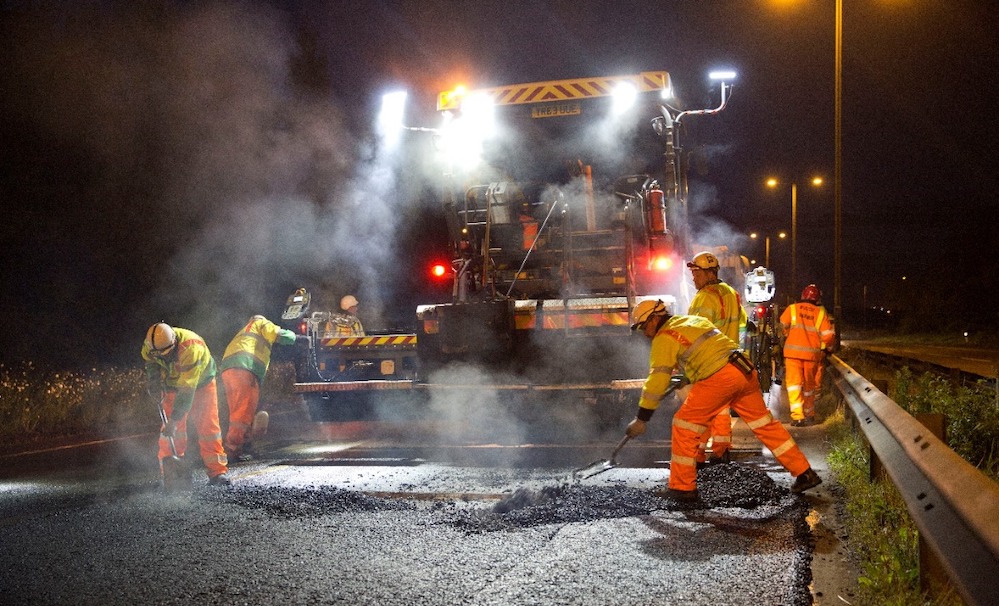There was a total of 25,160 people killed or seriously injured because of a road traffic accident in the year ending September 2016. With 90% of accidents involving human error, it can be difficult to determine a long-term solution. Fortunately, it does not appear as though car manufacturers are ignoring these figures. Accident-prevention technology has come a long way in the past decade; there are many innovations currently in development that we could see on our roads in the near future. In fact, autonomous safety features are expected to save an estimated 2,500 lives by 2030. Together with Pass N Go, a driving school in the North of England, we investigate further:
The main causes of road accidents
It comes with little surprise that speeding is one of the main causes of road accidents. According to the ROSPA, 6% of all injuries from road collisions are a result of inappropriate speeds. It’s well-known that higher speeds lead to more accidents — studies revealed that hitting someone when driving at between 30mph and 40mph increases the risk of fatality 3.5 and 5.5 times more than if you were travelling at a speed below 30mph.
Another cause of road accidents in the UK is the poor conditions of the roads. Some figures suggest that badly maintained roads play a part in as many as 10% of road accidents. One of these issues is potholes which can cause drivers to lose control of their car. When a vehicle comes in contact with a deep pothole, the impact is similar to a situation if they’d collided with an object at 35mph.
The mobile phone is a great danger to many on the road. Statistics show that drivers are four times more likely to crash when they’re distracted by a mobile phone. Despite this, a survey conducted by RAC revealed that 40% of people admitted to talking on their phone whilst in stationary traffic, 39% said that they’d checked their emails, texts and social media, and 29% said that they’d written a text, email or social media post!
Our emotions on the roads are having an impact on accident rates too. A huge 66% of fatal traffic accidents were caused by aggressive driving — also known as road rage. Again, this is a difficult issue to address. Impatience and lack of awareness is also causing accidents — in 2015, 9,055 vehicles were involved in an overtaking accident.
Current technology
Data from the Society of Motor Manufacturers and Traders (SMMT) shows that 66.8% of all new cars sold are equipped with at least one driverless safety feature. This is offered as standard or as an optional extra. Some of the technology that we can find in cars today include:
- Lane departure technology. This feature alerts the driver if they are drifting over into another lane — preventing a potential crash.
- Parking assistance. Many cars are now fitted with screens and cameras, allowing the driver to see what’s in their blind spots. There are also sensors available which alert the car when it is too close to an obstruction.
- Do Not Disturb While Driving feature. Apple has added this feature to phones that run the ios 11 update —it silences text and call notifications to avoid distraction to the driver.
- Autonomous emergency braking (AEB) is becoming common on new cars. This technology detects when the car should be slowing down and does so before the driver presses the brake. This technology is effective in preventing front-to-rear collisions. Research by the University of Adelaide in Australia examined 104 crashes and concluded that AEB could reduce fatal crashes by 20-25% and crashes where injury occurred could have been reduced by 25-35%.
What does the future look like?
All car manufacturers want to be ahead of the game when it comes to new technology and there are many innovations in the research and development phase that we could see come to light in the years ahead.
We hope to see more of the AEB system implemented in new cars. In Japan, more than half of the vehicles sold in 2016 came equipped with this system. In Europe, this figure was 24% and in the US, it was 9%. Toyota and GM are among 20 car makers who have said that this will be a standard in vehicles sold in US by 2022 — hopefully this will extend to the UK.
Nissan Motors are developing brain-to-vehicle technology (B2V) which uses signals from the drivers’ brains to catch signs that they are about to turn the wheel of brake. The car then begins this action more quickly — improving reaction times.
Black cabs in London are set to trial hi-tech cameras and collision prevention features in 2019 after a partnership with Mobileye. They are expected to get virtual maps that send data on hazards, traffic density and weather to vehicles.
Other features in the process of development include:
- Biometric sensors by Ford. These allow the car to understand when the driver is tired or stressed — potentially detecting cases of road rage. The vehicle then alerts the driver or can even take control of the car. This could be done through facial recognition as the car senses closing eyes and yawning.
- Cars could be programmed to spot potholes. They will then be programmed to transmit this information to Highways England and hopefully lead to higher levels of road maintenance.
As we can see, there are many ground-breaking concepts in the development stages, but implementing this technology in only some vehicles could be a problem. This was evident in Las Vegas when a self-driving shuttle crashed due to the slow reactions of a driver of a delivery truck. It’s likely that we won’t reap the full benefit of future safety technology until they are rolled out amongst all vehicles.







